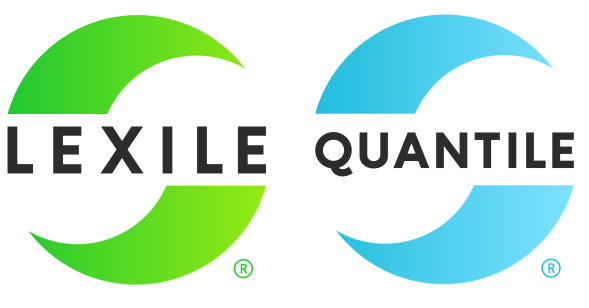Lexile-Quantile Growth Planner User Guide
Preface
This guide is intended for authorized users of the Lexile Growth Planner and Quantile Growth Planner tools who access and use the tool for classroom purposes. This document provides an overview and step-by-step guidance on how to access and use the tool.
Lexile & Quantile Growth Planners Description
The Lexile and Quantile Growth Planner are designed to display recorded and projected growth in reading and math. This allows educators to understand a student’s readiness for college and careers, compare a student’s performance to their grade level peers, and design a targeted approach to improving student outcomes.
There are two Growth Planner tools – Lexile Growth Planner and Quantile Growth Planner. Both tools are located on the Lexile & Quantile Hub and can be used with Lexile measures or Quantile measures. For the remainder of this user guide, we will use the Lexile Growth Planner as the example, though both tools function similarly and have similar classroom applications.
Features and Functionality
Lexile Growth Planner and Quantile Growth Planner Features
- Interpret multiple student measures to display growth over time
- Determine a student’s Estimated Growth Path to predict college and career readiness
- Compare a student’s measures to their peers based on national norm data
- Guide next steps in developing individualized learning plans
Premium membership in the Lexile & Quantile Hub includes advanced access to tools and resources. Educators looking to take advantage of the free premium membership offered by partner states, must register using their school- or district-issued email address. Visit Lexile and Quantile Hub membership options to learn more.
How It Works
Overview
The Lexile Growth Planner and Quantile Growth Planner tools use Lexile and Quantile measures to display recorded and projected growth in reading and math abilities. Users will enter a student’s Lexile and Quantile measures from statewide annual assessments to generate a predicted growth path. The Growth Planners’ graph shows the current student measure and forecasted growth path in comparison to the path of progress needed for college and career readiness.
Step 1: Open the Lexile Growth Planner*
Remember, whenever you log into your Hub account, it is important to use your school email address. Once you log in, your saved math resources and bookshelves will still be there!
Select the Tools Menu. Both the Lexile Growth Planner and Quantile Growth Planner are located here.
Step 2: Enter your student’s Lexile or Quantile measures
- Select Add/Edit Measure.
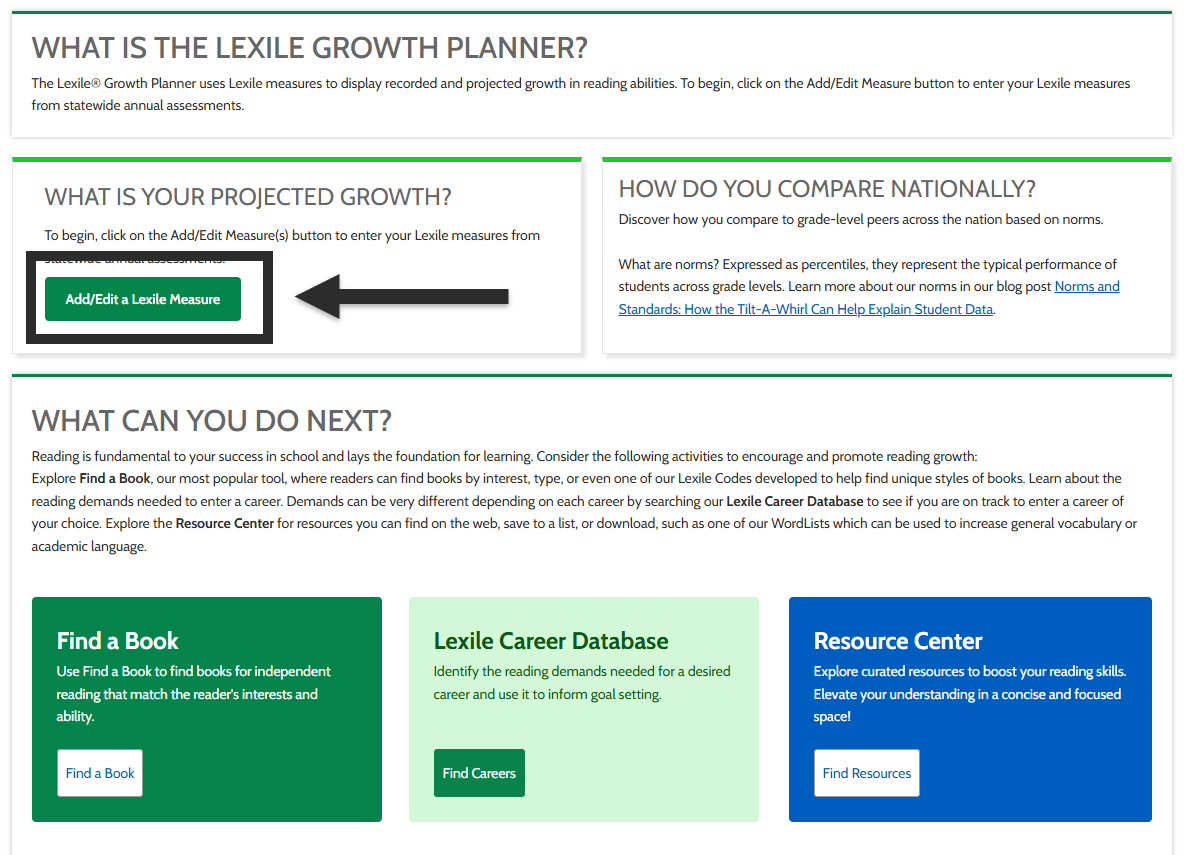
- Enter student’s measure, test month, grade, and school year. To add additional measures, select Add Measure. A new line will appear to input additional measure information:
- Select SUBMIT and the tool will generate results based on the student’s measures.
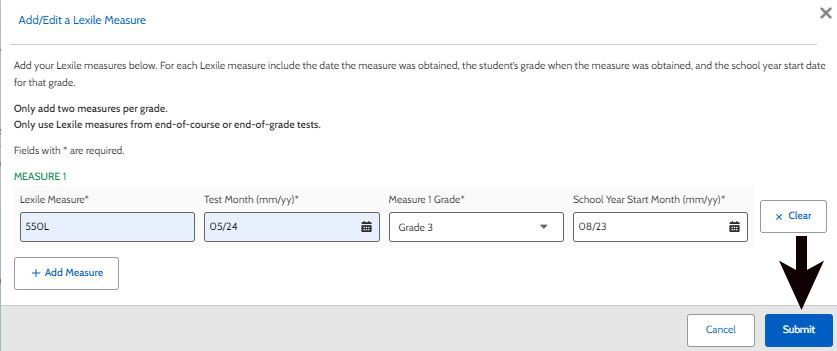
Step 3: View and Apply Your Results
- View the Growth Planner Result graph and notice the accompanying key. Tip: Definitions for each of these key terms is included at the bottom of the Growth Planner Results page.
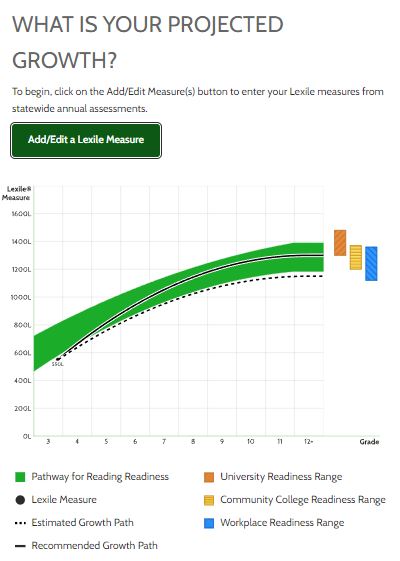
The graph does not include potential impacts on student progression including student effort, educator response to student measure feedback, or any other external interference.
- There is also a comparison chart to help understand how a student compares to their grade level peers, based on national norms.
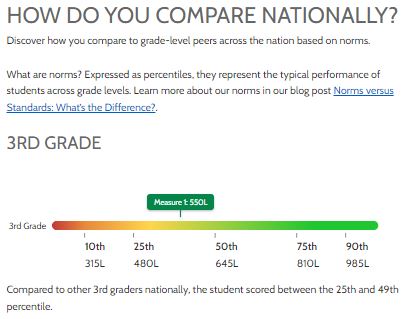
- Additional information:
- College and Career Readiness section displays how the student’s current measures and interests connect to readiness for a future career.
- What Can You Do Next section recommends additional supports that can be used to help improve student outcomes
- How Did We Calculate This? section defines key terms and research about the tool
Classroom Application
Monitor Student Progress
The graph can be used to help teachers, students, and families track student progress across grade levels. Because the Lexile and Quantile Frameworks establish a universal scale, this information can be tracked similar to a growth chart used by doctors to monitor the child’s growth over time.
Goal Setting
Use the student’s Estimated Growth Path and the Pathway for Reading Readiness to help set instructional goals for students.
Connect to College and Careers
Explore postsecondary areas of interest and connect college and career goals to actual student data. Help students understand the reading expectations to achieve their long-term goals.
